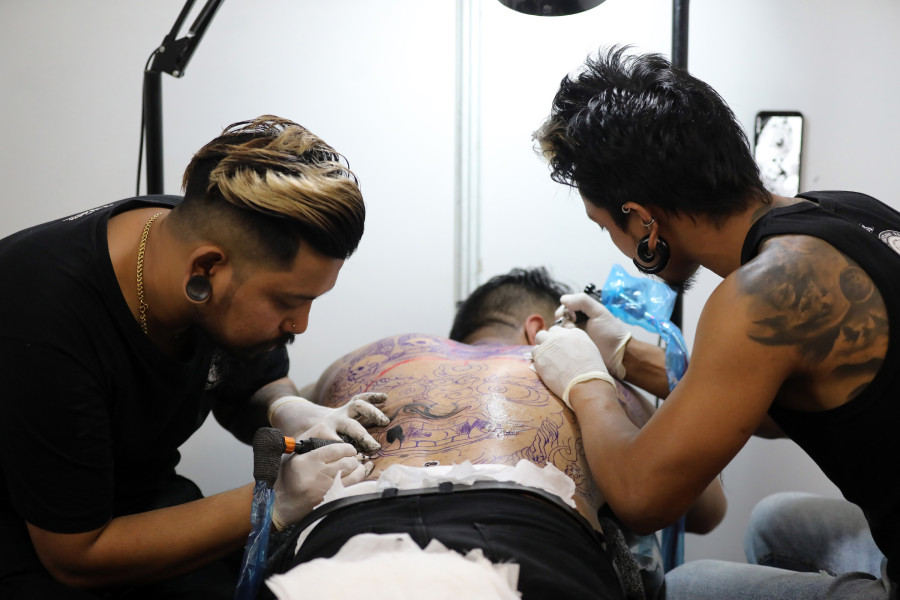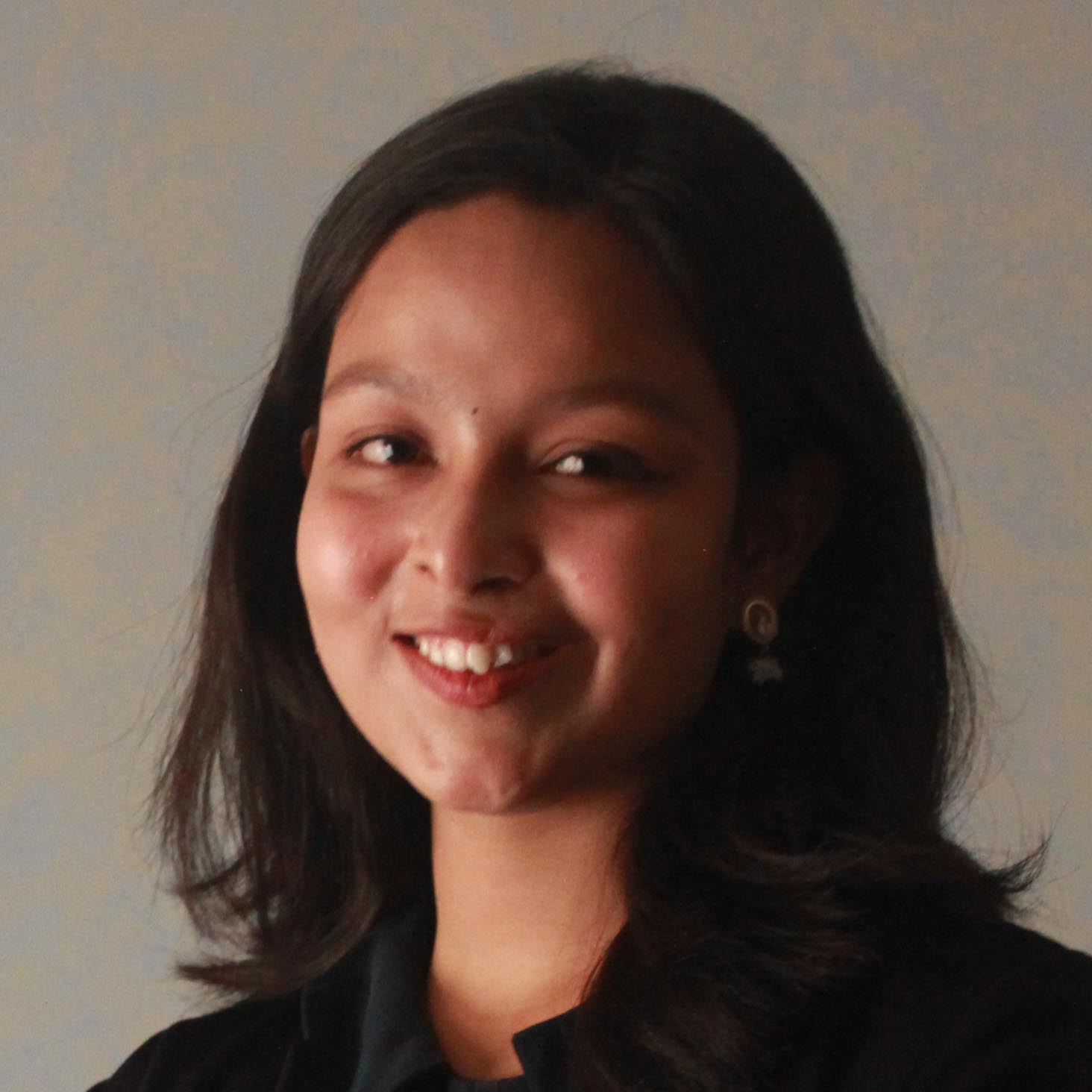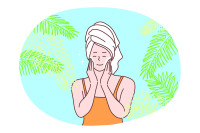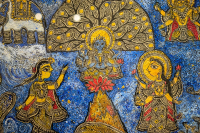Culture & Lifestyle
Traditional Nepali tattoos dying amid modern ink culture
Traditional tattoos lacked details but were more about the communities’ spiritual beliefs, while modern tattoos are more about aesthetics.
Rose Singh
Sita Rana Tharu was 20 years old and newly wed when she asked her mother-in-law to draw a tattoo on her hand. All the women in her family and neighbourhood at her village Thingura, Nepalgunj, had inked their hands and feet, so it was only natural for her to get one too.
“People used to say that you wouldn’t be allowed to enter heaven after you die, if you don’t have tattoos,” says the 65 year old, whose forearms and feet are now covered with various tattoos.
When asked what her first tattoo was, she can barely remember. But she says that, over the years, she has inked peacocks, a stove, stools, and cooking pots over her limbs. These are the materials, her community believes, that will help them survive in the afterlife. For women in her community, tattoos are also associated with beauty.
Although she doesn’t clearly remember when she tattooed each and every design over the many years, she remembers the process by heart. According to her, they light a lamp filled with mustard oil and cover it with a bowl-shaped lid, allowing black residue to form on the upper container’s surface. They then stick three needles together, which are then dipped in the black residue, mixed with more mustard oil, and finally used to poke the skin to form various designs.
For the aftercare, they cover the wounds with cow dung and wash them clean. Then, for the final step, they apply a mixture of turmeric and mustard oil.

Parbati Tharu, the eldest daughter of Sita Rana Tharu, shows her traditional tattoo, which signifies a stove.
Contemporary tattooing methods are completely different to indigenous methods. While Tharu decided to ink her body as a part of her religious and cultural beliefs, the modern trend—especially in the cities—is more inclined towards being a fashion statement.
Apart from the change in motive to have tattoos, the designs and processes are also significantly different. With many commercial tattoo parlours flourishing in the cities, all opt for more modern methods including aftercare.
In one such modern outfit, in the heart of Thamel, Mohan Gurung can be found. Hunched over fellow tattoo artist Shree Kisi’s forearm, with a tattoo gun on his hand. Both artists are seated on black chairs in front of a large window overlooking the busy Narsingha Chowk. Mohan has placed the blueprint of a design—a Japanese dragon—on a desk. With a headlamp lighting his work, he needles the motif on the skin with precise care.
Mohan’s Tattoo Inn, his eponymous shop, is one of the most famous spots for ink enthusiasts. Since the early 2000s, the studio has hosted many clients—both Nepalis and foreigners—who wanted their body decorated.
The veteran tattoo artist says that while people preferred western designs when they first started out, they have always focused on weaving both modern and traditional designs from various indigenous communities like Tharus, Newars, Magars and Gurungs.
“I have put together designs combining a Japanese dragon with tiki-jhya (latticed window),” says Gurung.
In Newar culture, tiki-jhya symbolises strength, and used to be one of the most famous designs in the community, says 78-year-old Yeju Kasula from Bhaktapur.
“It was believed that after a person dies and reaches heaven, this window would protect them from the sight of attackers and also help them take a good look at their surroundings without grabbing anyone’s attention,” the tattooed woman says.
Another tattoo artist, Yala Ink Tattoo’s owner Raja Bajracharya, has also used the traditional tiki-jhya in his contemporary designs. He has also combined the images of gods like Bhairab and Ganesh in some of his body art too.
When commercial tattooing first became popular in Nepal, young people were more interested in neo-traditional Japanese designs of dragons, phoenixes and tigers, but in recent years, that has changed.
“Nowadays, most of the clients want to combine traditional designs with the modern ones,” says Ajay Lama, owner of Radical Roots Tattoos.
While the Tharu method of hand poking underwent less rigorous sterilisation, today’s commercial parlours are more careful about contamination and infection. The transition from hand-poking and tapping methods to advanced tattoo guns has also encouraged young people to tattoo.
But with the use of modern tools, the traditional method is almost extinct in the communities that first started it.
“My grand daughters feared getting a tattoo using needles so they refused to learn the art,” says Kasula. “Now, the younger generation is unaware of our tradition and slowly the entire art started dying.”

Now, tattoos are seen as an art rather than having religious and cultural significance. When commercialisation first started, people were even sceptical that it was a bad influence on unsuspecting youth, without realising its roots are spread through many indigenous communities of Nepal.
With the growing numbers of tattoo artists in Nepal, many have not only sought to combine the traditional designs with modern ones, but experimented with traditional methods as well. In the 9th International Tattoo Convention, held in April 2019, some artists were seen using the tapping method.
Traditional tattoos lacked details but were more about the communities’ spiritual beliefs, while modern tattoos are more about aesthetics. But ironically, the traditional tattoos that also had cosmetic significance in the indigenous communities have been discarded by the younger generation.
“My daughters didn’t want to get tattoos as they said it tainted the skin. My older daughter has a few small ones that do not cover her limbs completely,” says Tharu.




 9.12°C Kathmandu
9.12°C Kathmandu















